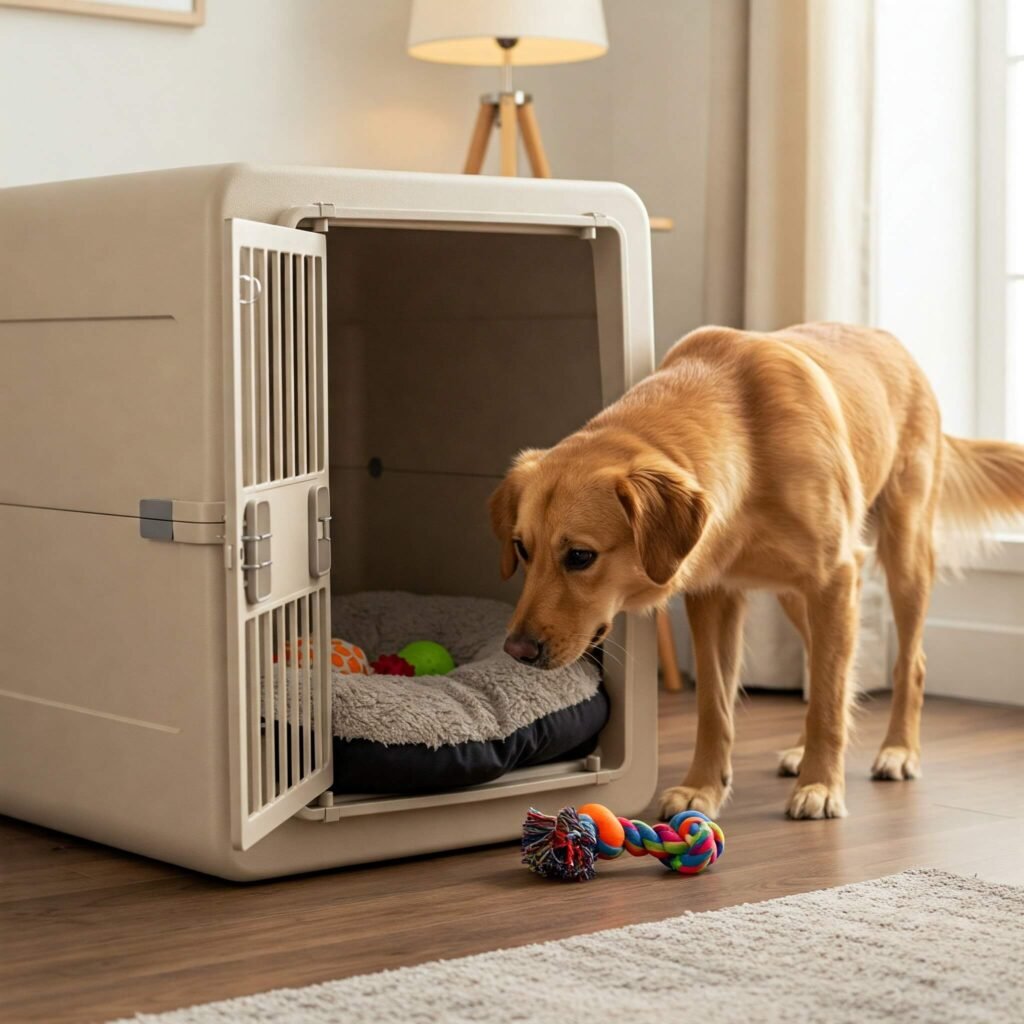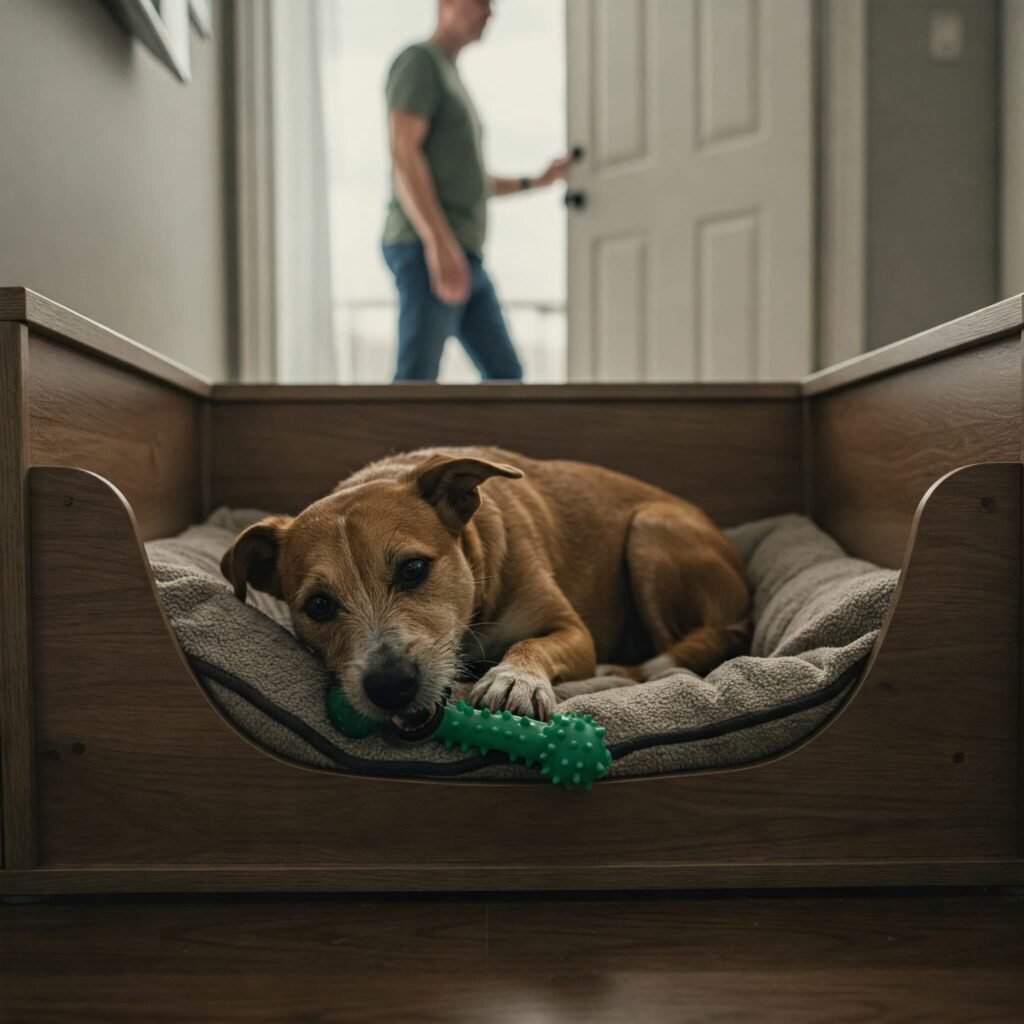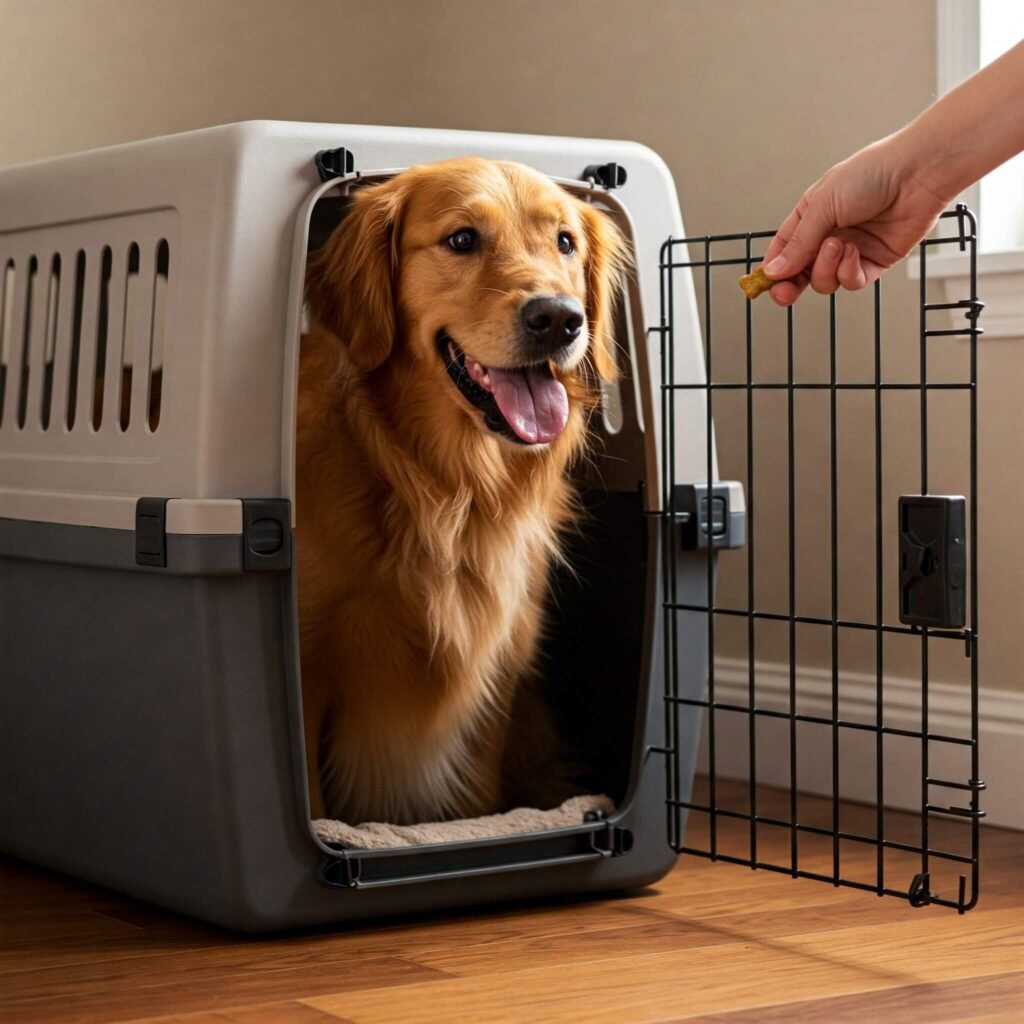Welcome, fellow dog lovers! I understand that crate training a dog can sometimes feel daunting. You might worry about your furry friend feeling confined or anxious. But fear not! This guide will make the process positive and stress-free for you and your companion. We’ll break down crate training into manageable stages, ensuring a comfortable transition for your pup and providing a valuable tool for you.
Why Crate Training is a Great Choice for Your Dog
Before we dive into how to crate train a dog, let’s discuss why this method is often recommended for canine companions. Crate training your dog offers many benefits when implemented correctly.
- Provides a Safe Haven: A crate becomes your dog’s den. It’s a secure and comfortable space for retreat during their initial crate introduction.
- Aids in Housetraining: Dogs naturally avoid soiling their sleeping area. This makes the crate a valuable tool for potty training during dog crate training.
- Prevents Destructive Behavior: A crate can prevent trouble when you can’t supervise your dog. This is a key aspect of successful puppy crate training and for adult dogs undergoing crate familiarization.
- Facilitates Travel: A dog comfortable with their crate, thanks to proper crate train, will likely feel secure during travel.
- Supports Recovery: A positive association with the crate will ease confinement for medical reasons, especially for a dog accustomed to this form of canine management.
Step 1: Making the Crate a Happy Place for Your Dog
The key to successful crate training a dog is positive associations. Never use the crate as punishment during dog crate train!
- Choose the Right Crate: Select a crate that allows your dog to stand, turn, and lie comfortably. A crate too large can hinder effective puppy crate training.
- Make it Inviting: Place a comfortable bed, blanket, and safe toys inside. Aim for a cozy den for your dog during their crate train.
- Positive First Experiences:
- Leave the door open and let your dog explore at their own pace. Don’t force entry during initial crate training.
- Toss high-value treats and toys inside to encourage voluntary entry. This builds positive feelings about dog crate training.
- Feed your dog meals inside. This associates the crate with something pleasant, crucial for positive crate training.

Step 2: Gradual Acclimation for Stress-Free Crate Introduction
Once your dog enters the crate comfortably, a milestone in crate train a dog, increase the time inside gradually to build positive associations with crate time.
- Short Intervals: Begin with very short periods (a few minutes) while nearby during crate training. Stay calm and positive throughout the dog crate training process.
- Positive Reinforcement: Reward quiet and relaxed behavior inside with praise and treats. This reinforces positive behavior during crate training.
- Gradually Increase Duration: Slowly increase the time in the crate by a few minutes each crate training session. Watch their comfort level. If distressed, shorten the next session of dog crate training.
- Associate with Pleasant Activities: Offer a special chew toy or puzzle feeder only in the crate. This creates a positive association, making crate training more enjoyable for your dog.
Step 3: Extending Crate Time When You’re Away from Your Dog
This step needs patience and careful observation during your dog’s crate training. Never leave your dog crated for long periods, especially early in the process of crate training a dog.
- Practice Short Departures: Once your dog is comfortable for about 30 minutes while you’re home, practice short departures as part of their dog crate training. Leave the room for a few minutes, then return. Gradually increase absence during these crate training sessions.
- Keep Departures and Arrivals Low-Key: Avoid fuss when leaving or returning during crate training. This can increase anxiety related to crate training.
- Ensure Comfort: Provide fresh water and ensure comfort before leaving them in the crate for crate training purposes.
- Never Use the Crate for Punishment: This creates negative associations and undermines your efforts to crate train a dog.

Step 4: Introducing Overnight Crating for Your Dog’s Routine
Once your dog is comfortable crated during the day, a good sign in their crate training journey, start overnight crate training a dog to establish a consistent routine.
- Location Matters: Initially, keep the crate in your bedroom. This helps your dog feel close and secure during nighttime.
- Consistent Bedtime Routine: Establish a calming routine before overnight crate training. Include a short walk and potty break.
- Addressing Nighttime Whining During Crate Training: Differentiate between a potty need and attention-seeking during overnight crate training. If they whimper after a recent potty break, try ignoring it. Responding can reinforce this behavior. However, if you suspect a genuine need, take them out briefly without much interaction.
- Positive Morning Greetings: Greet your dog calmly and positively after a successful night of crate train.
Step 5: Overcoming Common Crate Training Challenges
Even with best efforts, you might face challenges during crate training a dog. Addressing these is crucial for successful dog crate training.
- Dealing with Whining and Barking: Ensure basic needs (potty, food, water) are met before crating. If whining is for attention, try ignoring it. Covering the crate might reduce visual stimulation during crate train.
- Managing Crate Anxiety: If your dog shows severe anxiety (panting, drooling, escape attempts), consult a vet or certified trainer for guidance on stress-free crate training.
- Addressing Resistance to Entering: Revisit the initial steps of making the crate positive with treats and toys. Encourage voluntary entry for crate training. Avoid forcing them at any stage of dog crate train.









































